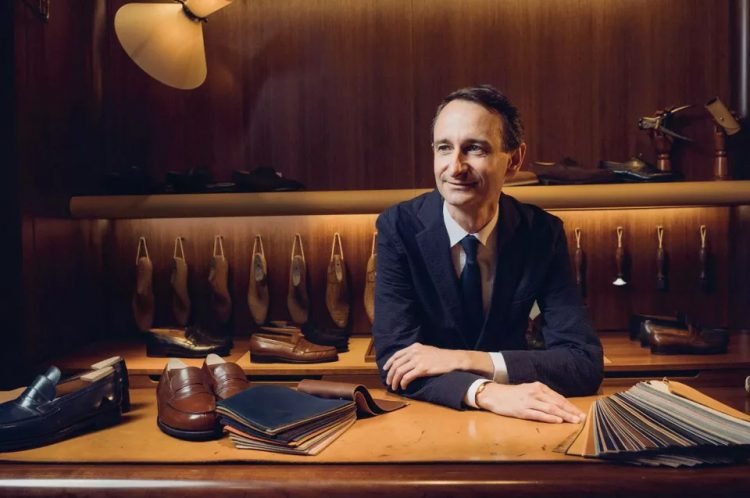The “made in Limoges” moccasin brand is getting a new lease on life with lines of trainers, espadrilles and heeled shoes for ladies. Iconic in Japan, it aims to reconquer America.
Among his aficionados, Omar Sy, Pierre Niney, Daniel Craig, Jake Gyllenhaal, almost all the Presidents of the Republic, including Emmanuel Macron. François Mitterrand owned more than thirty pairs. For more than one hundred and thirty years, J.-M. Weston has embodied, when it comes to shoes, good taste “à la française”. His best-seller, the 180 moccasin – because its manufacture requires 180 operations – is often called Mohican or Janson-de-Sailly. The brand has long flourished in the upscale neighborhoods and a certain idea of elegance: blazer, shirt, sweater on the shoulders and Weston on the feet.
But, walking around the flagship on the Champs-Élysées – the brand has been established there since 1936, a record longevity after Guerlain – it is clear that Weston has diversified its range. In addition to its moccasins, the crocodile version of which peaks at 6,000 euros a pair, there are riding boots, those of the Republican Guard, heels for ladies, espadrilles and even sneakers at 495 euros. “In the 1920s and 1930s, Weston was a sports brand. We launched sneakers in 1932. Long before our famous moccasin, which dates from 1946,” explains Marc Durie. This luxury pro, who learned his trade at Christian Louboutin, Louis Vuitton and Yves Saint Laurent, in Paris and Hong Kong, was chosen by the Descours family, the family group that has owned the brand since 1974, to pilot Weston.
The saga began in Limoges in 1891 with Édouard Blanchard. But it was his son, Eugène, who, after a four-year stay in the United States in Massachusetts and the good town of… Weston, in 1904 brought the double touch of legend. First by adopting, to look chic, a name with an Anglo-Saxon sound. And above all by importing the so-called Goodyear sewn technique, which makes it possible to mount and resole shoes and make them more resistant. “All our shoes can be resoled up to five times in our workshops and come out as new for around 250 euros. Including sneakers,” says Marc Durie.
40 million euros in turnover in 2021, i.e. 19% more than in 2019
In Limoges, 130 craftsmen still make moccasins, boots or ankle boots – 20% of production is made in Portugal. Most suppliers of skins, leathers, etc. are located within a radius of 100 kilometres. Only the tanneries located in Puy-en-Velay, formerly owned by the group but sold to Hermès, are four hours away. While Weston denies being a luxury brand, it has all the attributes: high-end prices, selective distribution and values, such as father-son transmission, found in fine watchmaking or at the big names in luxury. “We have two types of clientele, those who have had moccasins since the 1980s and 1990s and a younger clientele who have adopted us. We have created Weston events with skate brands!” continues Marc Durie, whose artistic advisor is fashion historian Olivier Saillard.
Long modest about its results, Weston agrees to reveal its turnover to us: 40 million euros in 2021, up 19% compared to 2019. But remains discreet about its profits. While 80% of sales are made in France, a large proportion of customers in France (15% to 20%) come from West Africa. The good society of Dakar or Yamoussoukro loves Limougeaud shoes. The group’s second major market is Japan (15% of turnover), where Weston is considered the Rolls Royce of footwear. Finally, 2023 will mark the return of Weston to the United States – deserted during the pandemic – with the opening of a boutique in Manhattan. There remains, “last but not least”, the divisive debate. Should Westons be worn with or without socks? “Without? A heresy!” assure the purists. “A happiness”, for the other camp. The CEO of the group is content with a cautious “everyone does what he pleases”.









